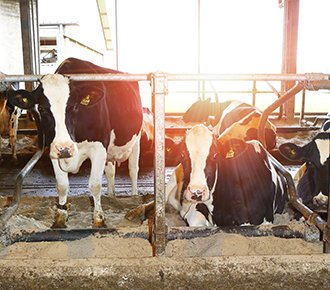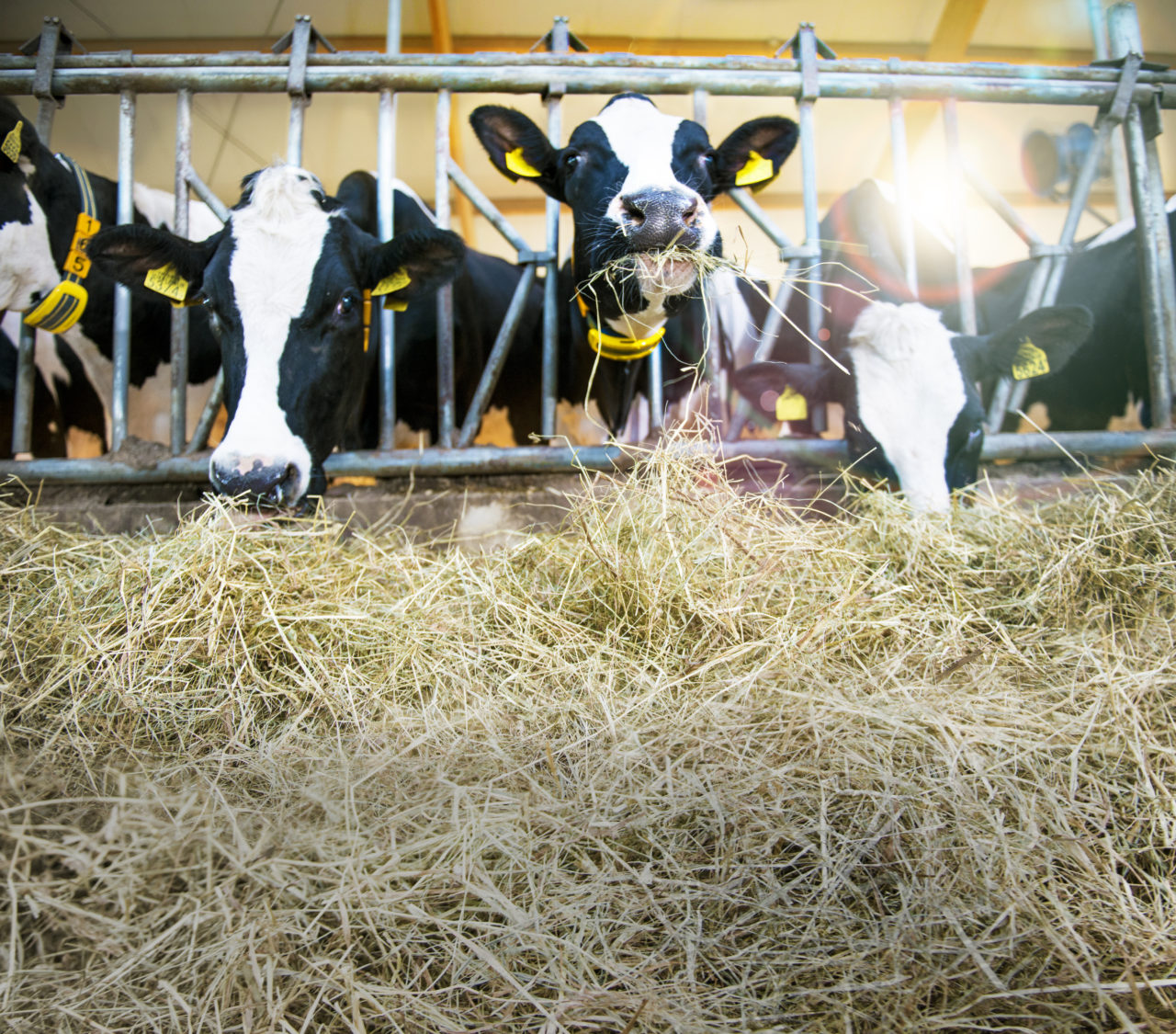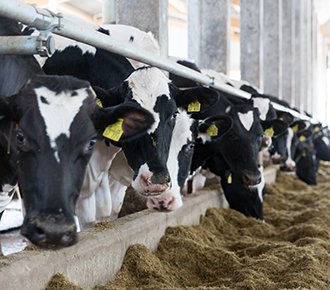- Sense of Sensors study
A performance grade for the transition
Practical study Utrecht University, Wageningen University & Research, Vetvice and Nedap
Sense of sensors in transition management
On a dairy farm, there is certainly no shortage of data. Key performance indicators for milk production and livestock health have come to form an indispensable part of modern-day livestock farming and with the advent of sensors, the flow of data has expanded still further. In a large-scale practical study, Utrecht University, Wageningen University & Research, Vetvice and Nedap are seeking to identify a method that will make it possible to derive practical value from the information provided by sensors. In a series of articles, we will look over their shoulders as they carry out their research. In this edition: Problem cows can already be identified during their non-lactation period.
A performance grade for the transition
Cows that spent too little time eating during their non-lactation periods run a greater risk of suffering from a variety of diseases and conditions. This is one of the findings obtained during the practical study “Sense of Sensors”. A livestock farmer may not notice this very quickly, but the sensors will.
On the majority of dairy farms, the farmer himself judges whether his fresh cows are sufficiently fit after calving. The eyes of the master can see whether a cow is sufficiently active, whether she is ruminating and is feeling fit and healthy. If the vision of Jan Hulsen of Vetvice becomes reality, this will be done differently in the future. State-of-the-art farms will use sensors to provide the livestock farmer with detailed information about what is wrong with an individual cow, or more importantly, what is threatening to go wrong. “Sensors are extra pairs of eyes in the barn that can monitor the herd 24 hours a day, seven days a week. In our practical study entitled “Sense of Sensors”, we are seeking to establish a way of deriving practical value from the information provided by sensors”, explained Jan Hulsen, who is involved in the project as a coordinator.

Step 1: collecting data through sensors
Sensors measure the time and periods a cow spends eating, ruminating, standing, lying, walking and being ‘inactive’.

Step 2: interpretation of data through the computer
The computer compares information from the sensors with the optimal scenario.

Step 3: additional advice - add extra energy
For cows that eat too little, an adjustment in the ration may be the advice.
Ketosis as a predictive factor
According to Jan Hulsen, the first tangible product to have arisen as a result of the research is the identification of risk groups, especially cows that are highly likely to develop ketosis. “Cows that spend too little time eating, or display too great a fluctuation in the amounts of time they spend eating form a risk group that would benefit from receiving a daily dose of propylene glycol during the first week after calving.”
Ketosis, however, is an important predictor of other conditions as well, such as metritis, mastitis or lameness. The program manager of the study, Peter Hut, explained this in more detail. “A large number of diseases and conditions that occur at the start of lactation result from ketosis. Cows that are lacking in energy are ultimately more sensitive and susceptible, as the cow’s immune system is under pressure.”
Hut went on to point out that this is not only based on a study of the literature, but is confirmed in the results obtained during the practical study. “Sick cows spent between half an hour and three quarters of an hour less time eating each day than healthy cows. And they don’t just do that when they’re actually sick, but they start doing it before that, during their non-lactation period. A livestock farmer may not notice it, but the sensors will.”
A preventative approach
To many livestock farmers, this may seem strange. Improving fertility and preventing mastitis by dealing with ketosis? After all, the first things you think of in cases of mastitis are the infection load in the stall, or hygiene in the milking parlor, aren’t they? Hulsen and Hut, however, believe that ketosis forms an essential parameter when taking measures to preserve animal health. “The majority of conditions can be traced back to the metabolism. That is why ketosis is the most useful parameter – it doesn’t allow you to predict all possible problems, but it does make it possible to predict several. The figures bear this out”, said Jan Hulsen. For example, cows with ketosis are more likely to contract metritis or mastitis and are more likely to suffer abomasal displacements.
The Koepon dairy farm in the Netherlands has already gained experience of how useful sensors can be. According to Jan Hulsen, sensors provide the farmer with a performance grade for the transitional period. “By carrying out this study, our aim is to identify monitoring points that form predictors of success. We will then convert these into targets that can be applied to the non-lactation period,” reiterated Hulsen. Spending too little time eating is a sign that something isn’t right. Either there is too varied a selection of feed, too many animals are being kept in once place, the cows are suffering from heat-stress or the feed has been affected by heating. As a livestock farmer, your task is then to ensure that the cows eat more while they are not lactating.

Alex Borst (Koepon dairy farm):
“Using sensors will certainly save cows”
At the Koepon dairy farm in The Netherlands, all cows were fitted with Alta CowWatch sensors four months ago. These contain technology from Nedap and are used to measure factors such as the eating and rumination of the cattle. The Herd Manager, Alex Borst, says that he would not wish to be without the sensors now. “Since the sensors were introduced, our work has been based to a greater degree on the figures than on our gut feeling. From now on, cows that eat too little 48 hours after calving will be kept in a straw-bedded pen. If a cow eats for less than three hours a day, she isn’t ready to return to the herd”, he said, firmly.
In his view, the final week before calving is a critical phase. In some cases, the time spent eating drops by thirty to forty percent. “In the close-up group, we dose a drench over the feed so that the cows continue to receive sufficient nutrition.” Alex Borst said that the information from the sensors allows him to take advance action more promptly. “I much prefer working in a preventative way. For example, we often give ethylene glycol to fresh cows that need a bit of extra care. The sensors inform me which cows fall within that category.” As Herd Manager, he is also seeing the benefits when it comes to combating mastitis. “An alarm sounds on my phone if the eating and rumination time of a cow changes suddenly and drastically. A cow with mastitis that hasn’t eaten anything for several hours will be treated immediately. This will prevent her from being sick with an E. coli infection only a short time later. Measuring is knowing, and using sensors will certainly save cows.”
Related articles
Read more articles about the large-scale practical study Sense of Sensors in Transition Management.



